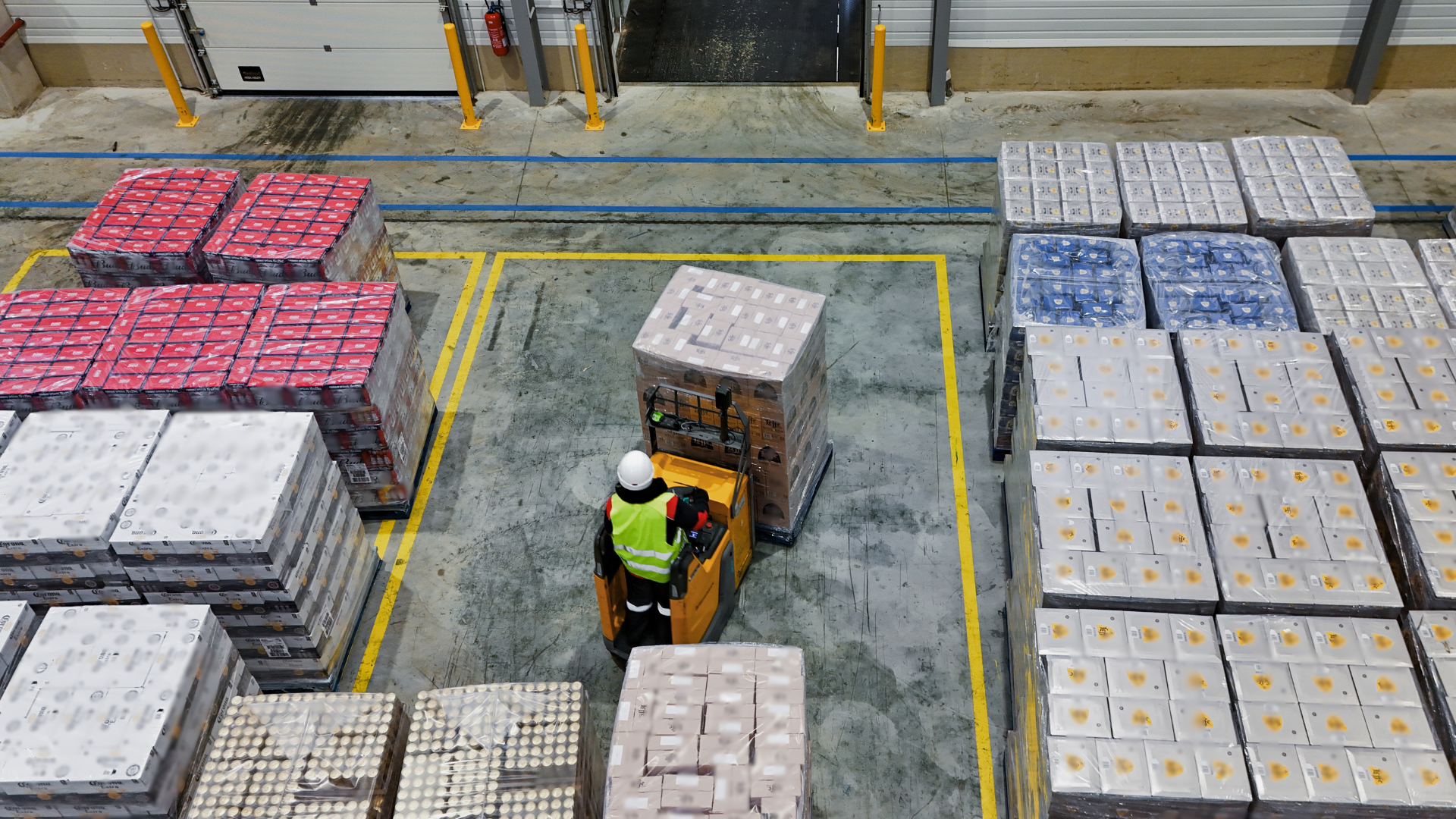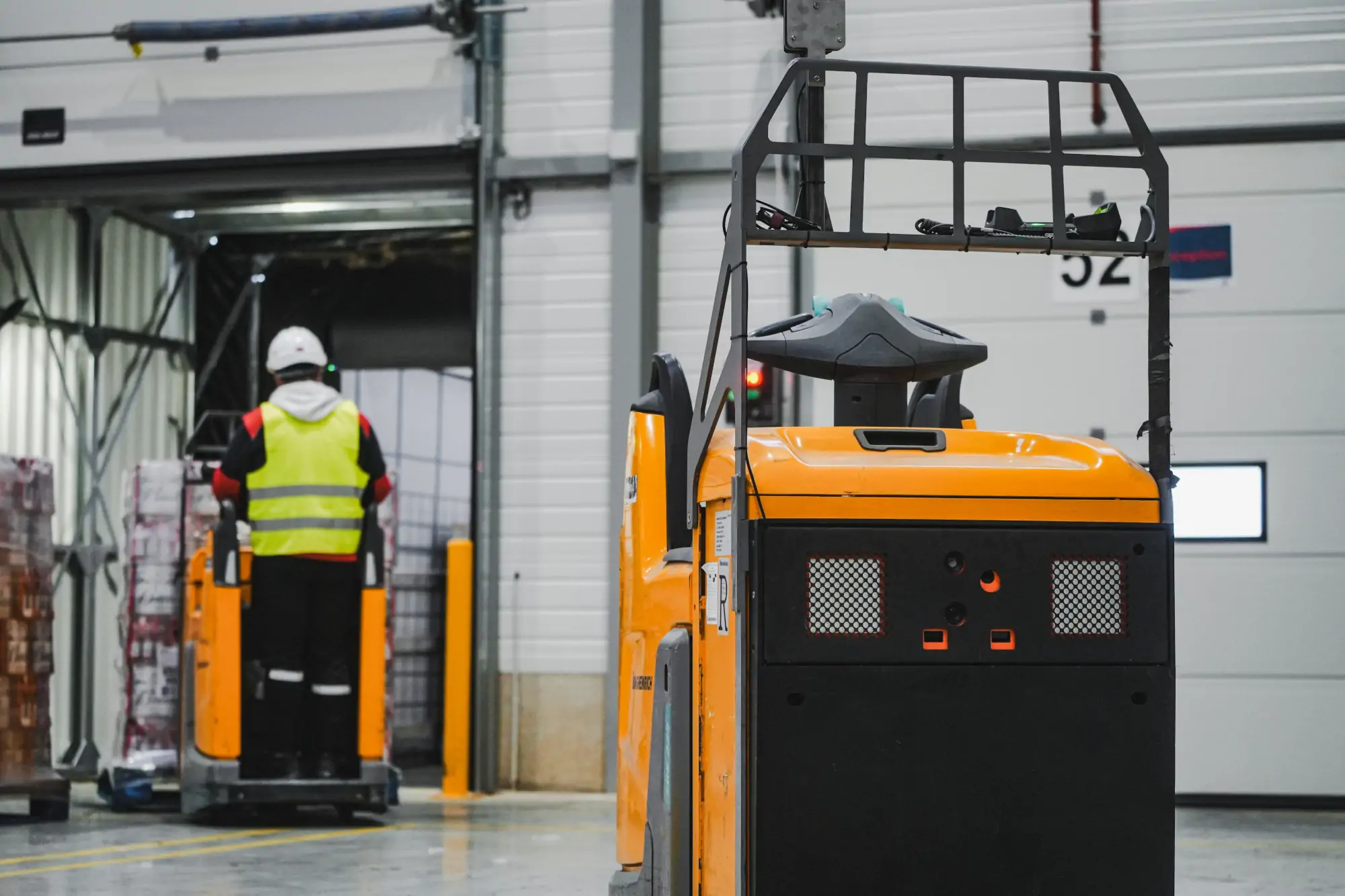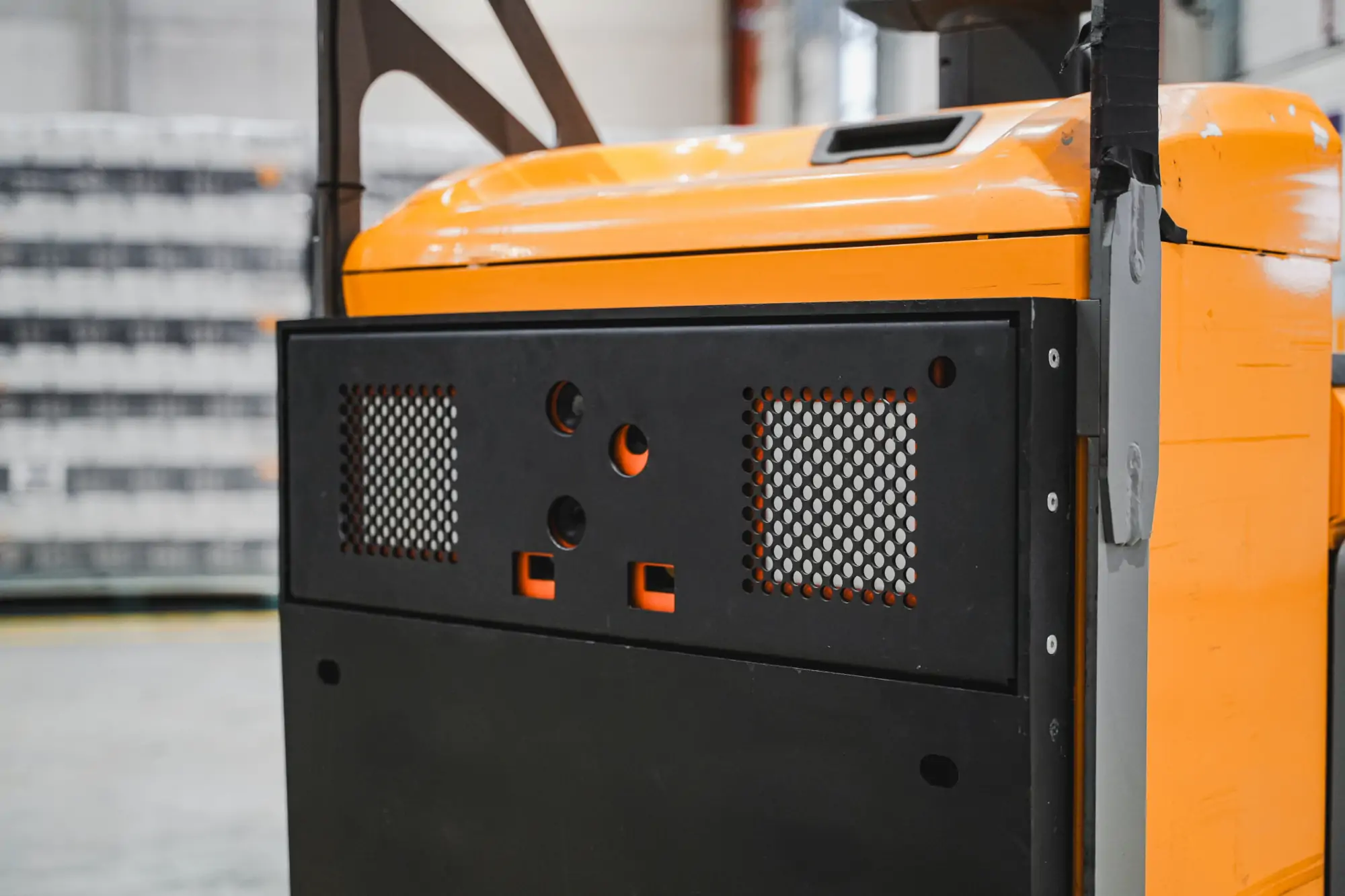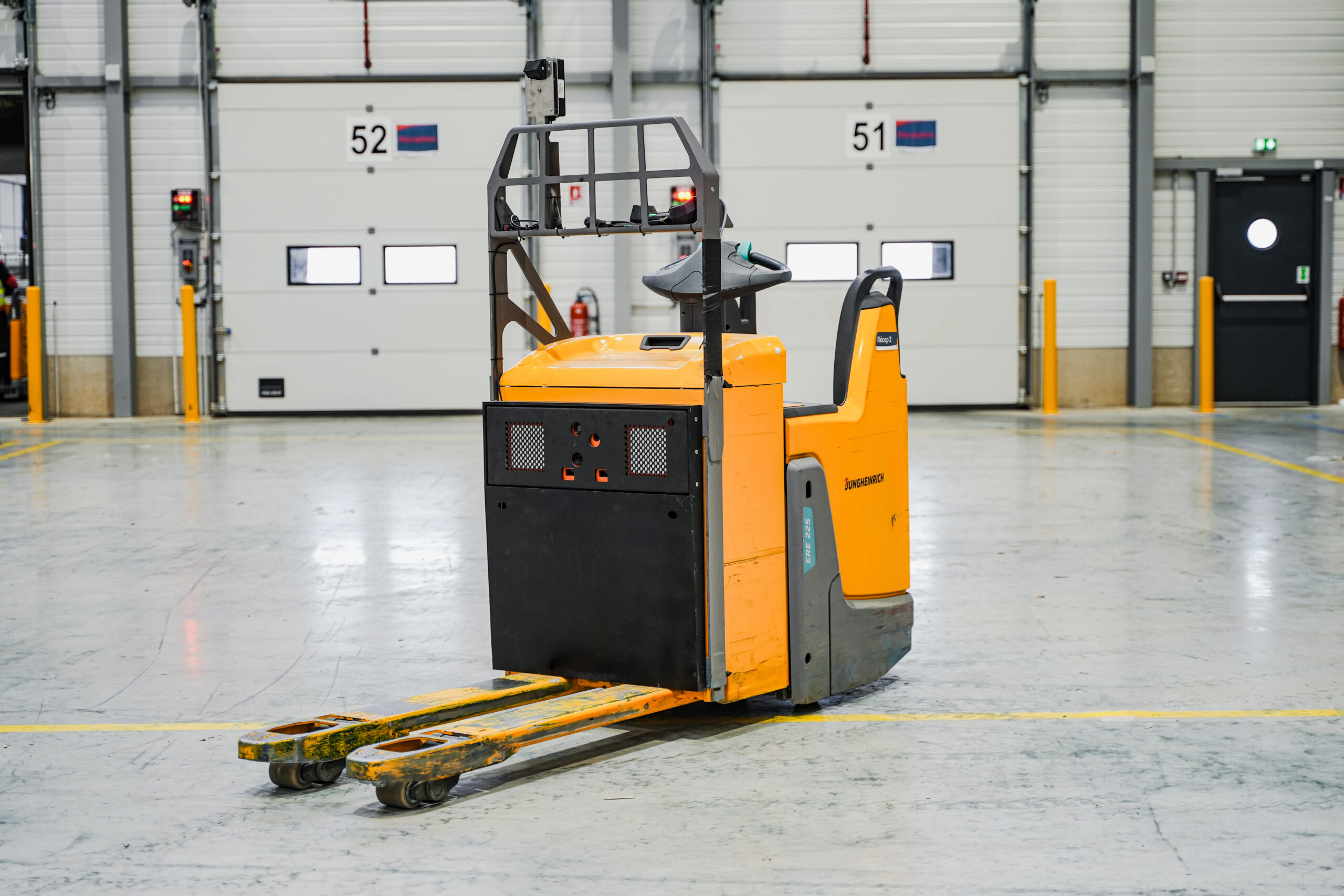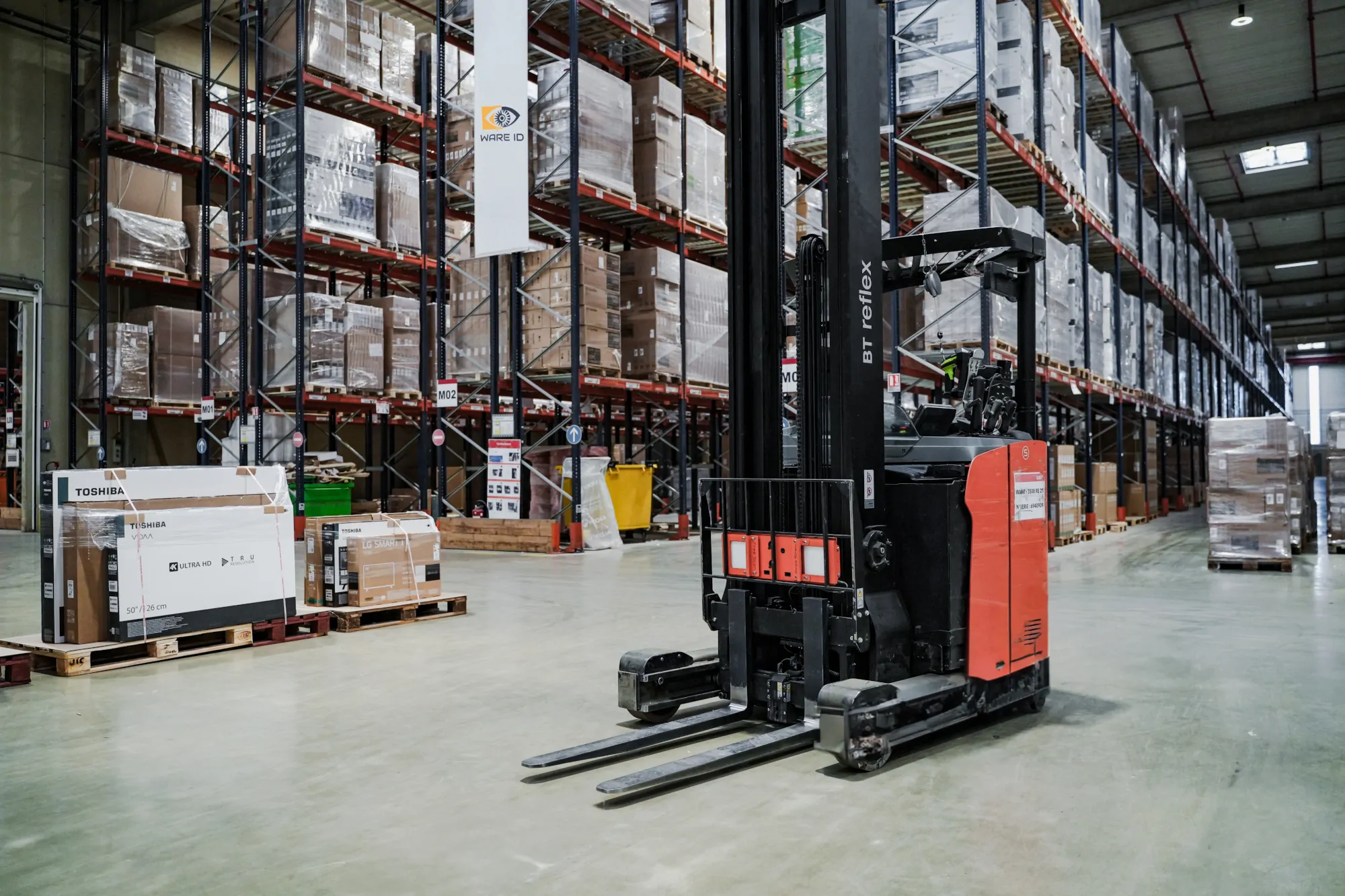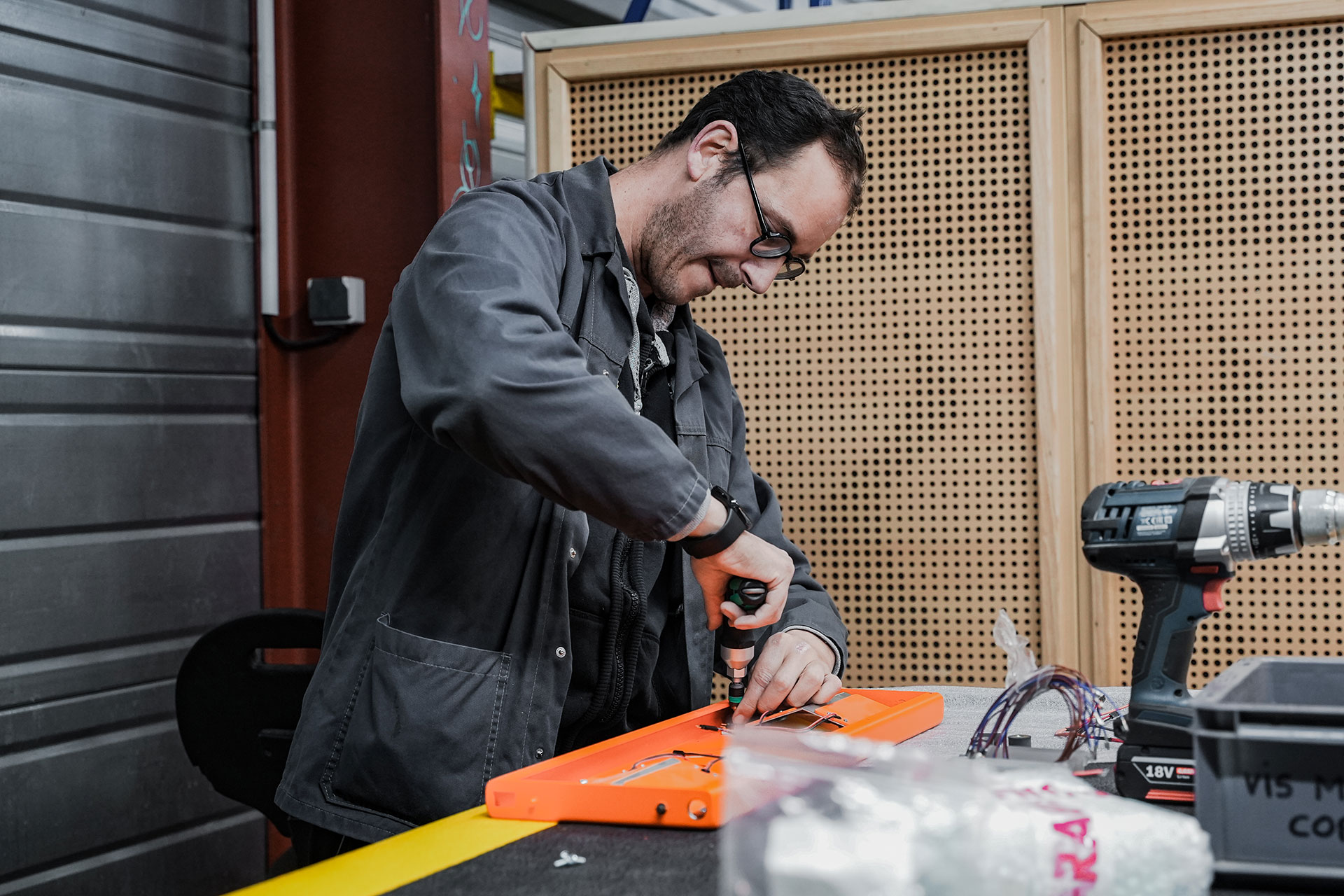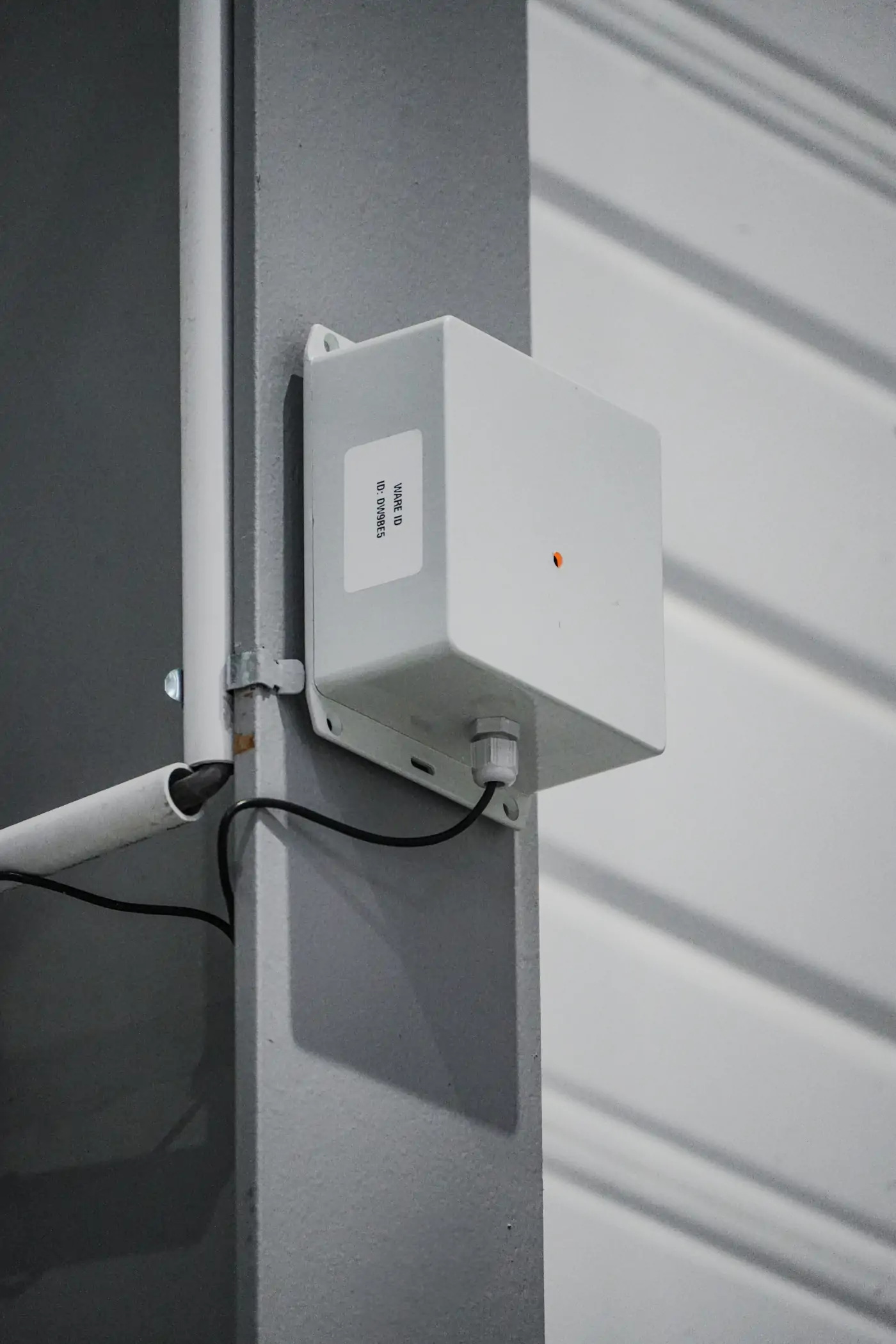
Make your loading more reliable
WARE ID has developed an innovative solution that allows you to control each dock passing without any manual action from the operator. This solution is easy to install and does not require any specific development on your WMS.
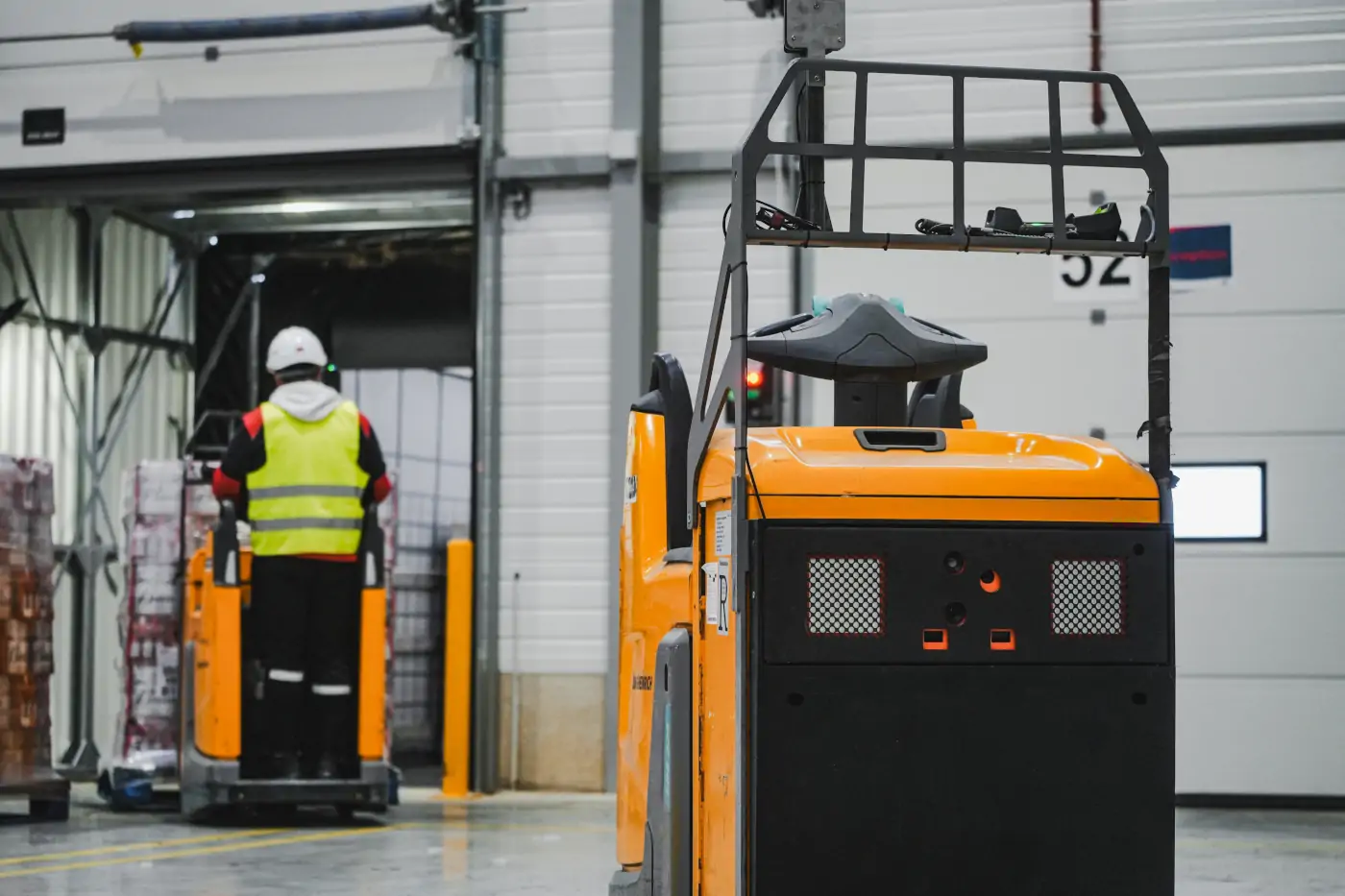
Wi-Locate
Solution
The Wi-Locate solution consists of UWB antennae installed on the docks and a receiver box installed on your forklift truck and connected by Bluetooth or USB to your on-board computer.
Once the pallet has been scanned with a FREESCAN or manually with a PDA, the receiver box will pick up the signals sent by the antennae and send the corresponding dock number to your WMS as soon as the pallet crosses the dock.
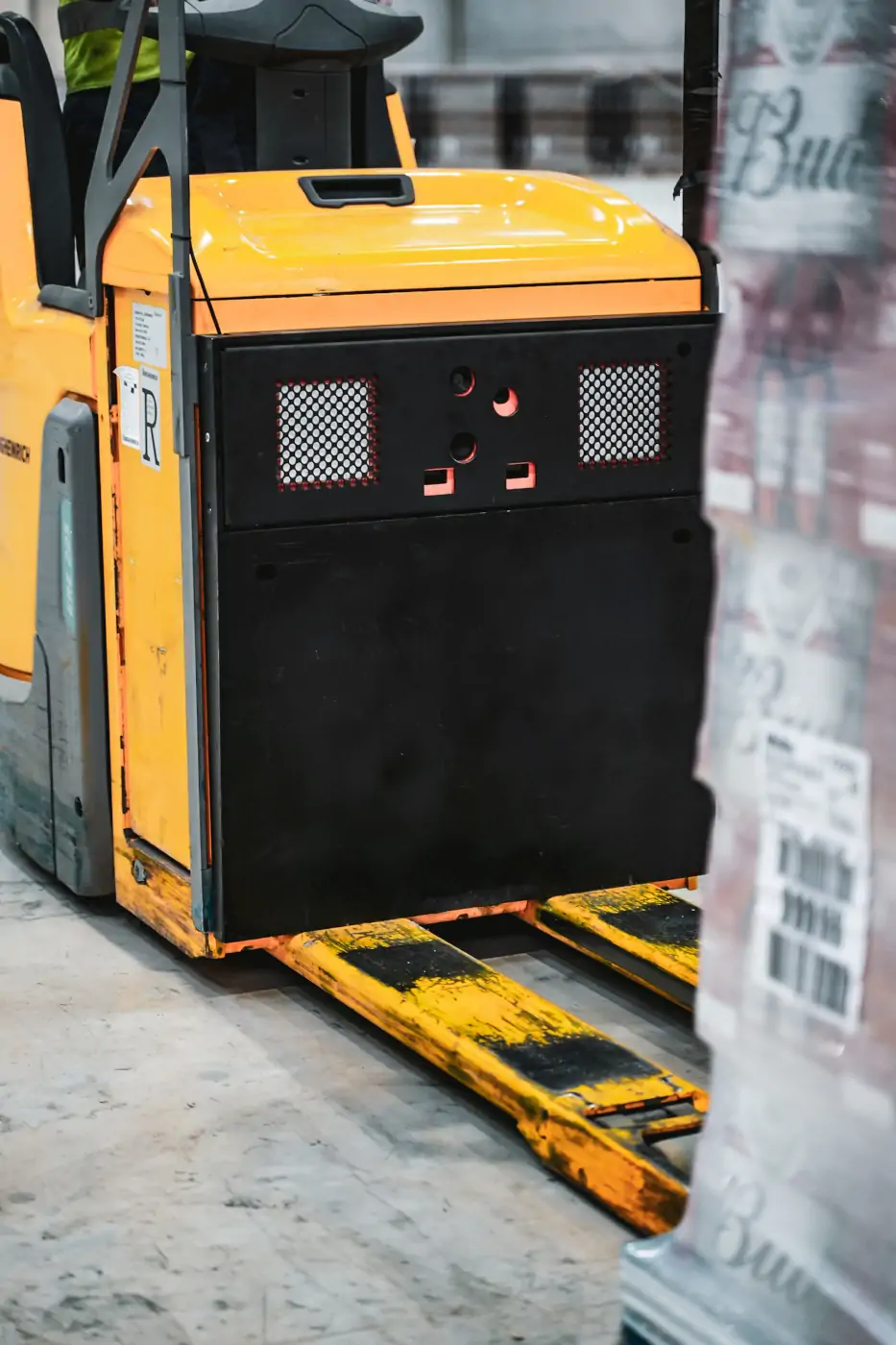
Freescan’s metal case protection
To go along with the Wi-Locate solution, we have designed a steel metal case protection that enables the FREESCAN 220 A or B to be installed on a C1 type ride-on truck. This metal case protects the FREESCAN from pallet impacts.
This means we can optimise your loading process 100% by adding automated reading and photo-taking to geolocation.
On video
Connected docks’
advantages
-
Secure your data flows
Automatic control of the sscc code and dock number to prevent parcels from being loaded onto the wrong truck. And a nice photo of the pallet for your quality department thanks to the use of FREESCAN. -
Easy to install
No need to integrate the solution into your WMS.
Plug and Work! -
Improved ergonomics and a safer workstation
The driver no longer has to worry about the scan, he can concentrate on driving without reaching out to validate the dock. -
Productivity gains
3 seconds saved per pass. Coupled with reading via a FREESCAN, this will save 7 seconds in total.
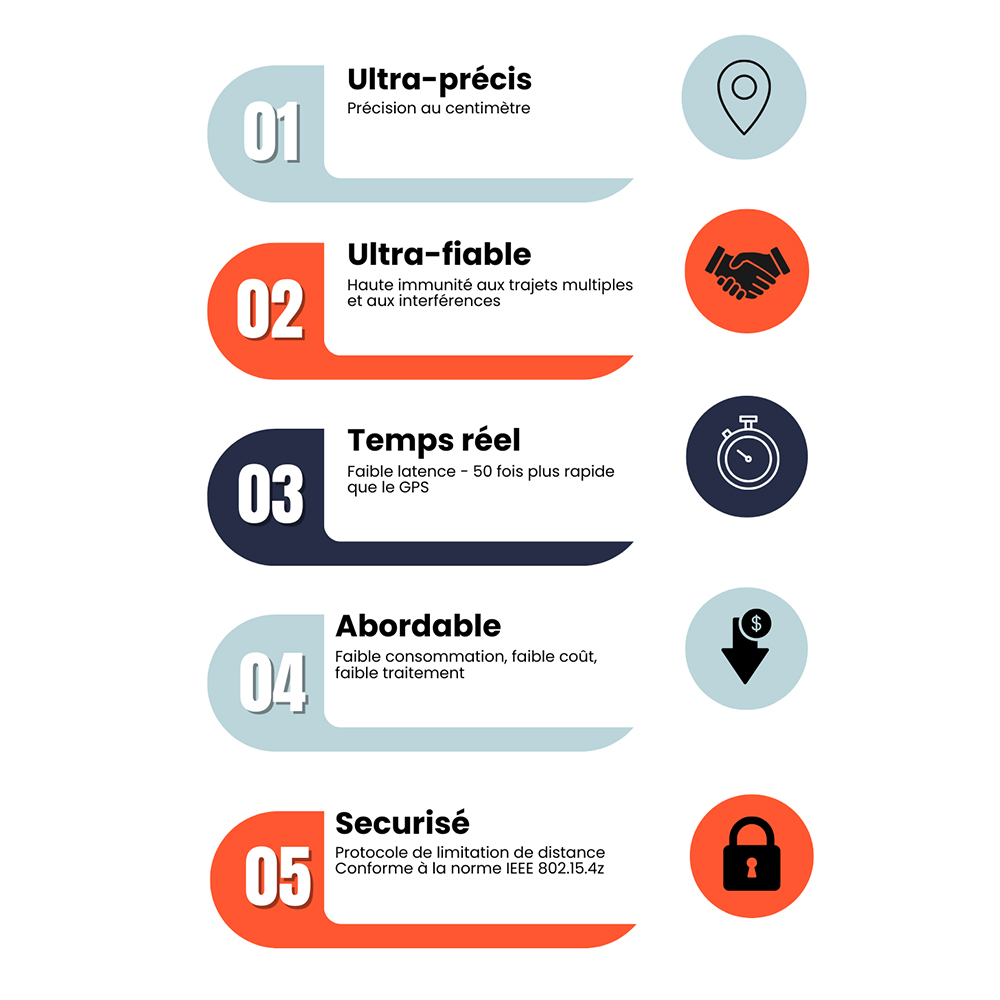
What is UWB ?
UWB stands for ‘Ultra Wide Band’. It is a radio transmission standard used not only for data transmission, but also for tracking and access control.
UWB differs from standards such as WiFi and Bluetooth in that it occupies a very wide frequency
band of 500 MHz, in a spectrum ranging from 3.1 GHz to 10.6 GHz, and has been designed to undergo (and cause) less interference with other wireless communication standards.
Documents
